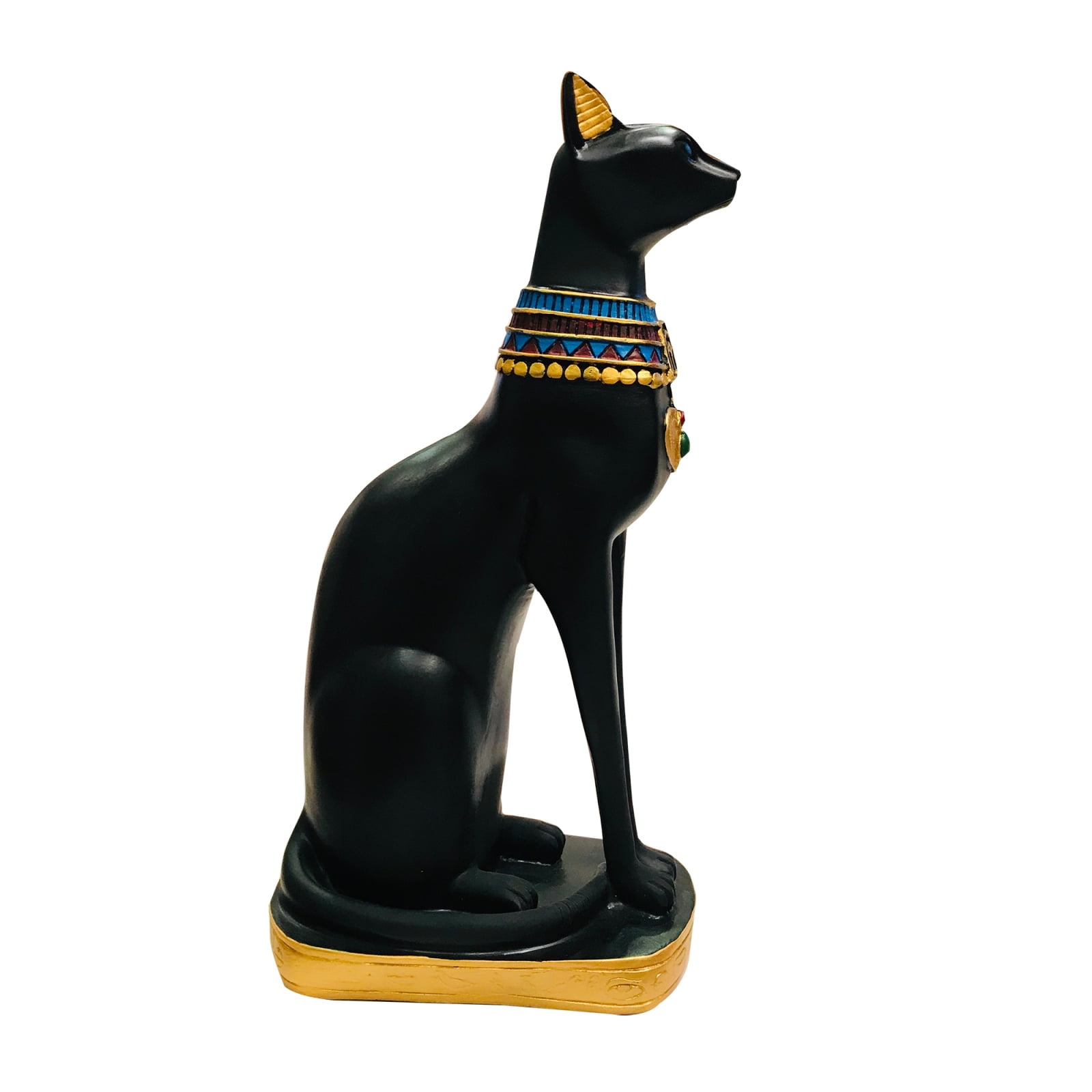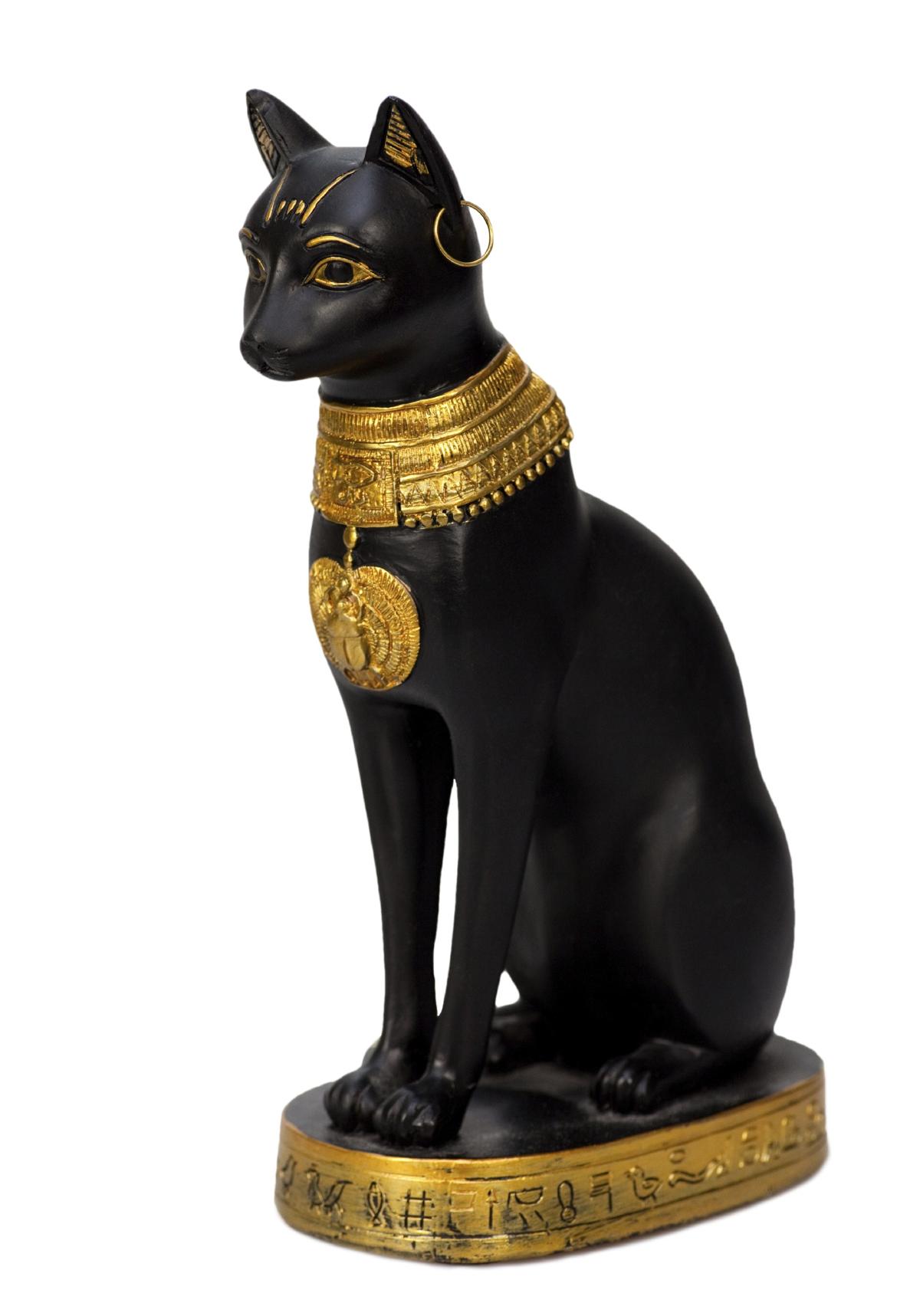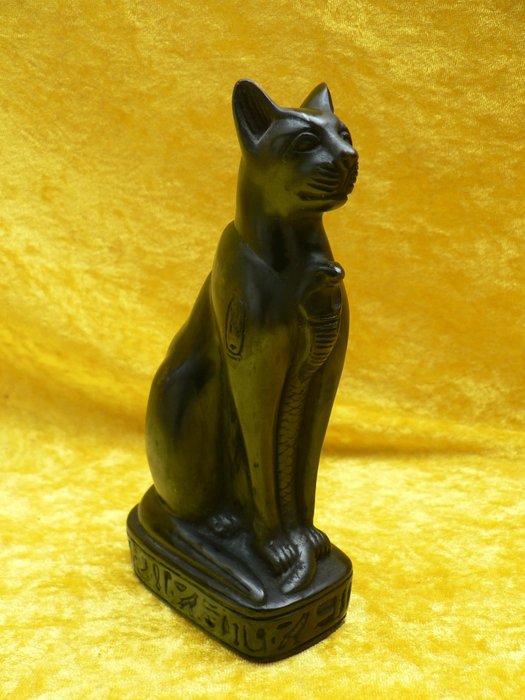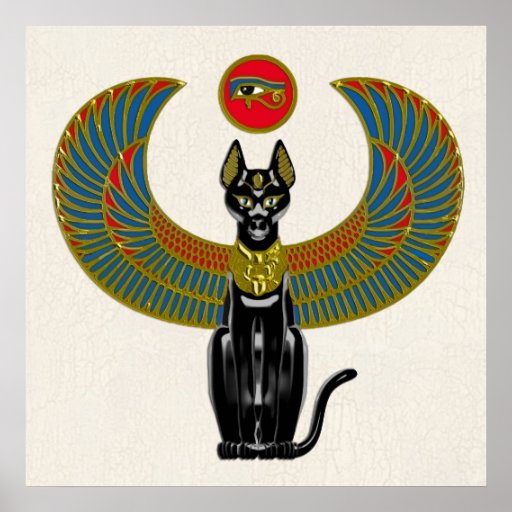
Black Egyptian Ancient Style Cat Goddess Bastet Statue, 12 inches tall, Medium Size Walmart
De kat in het oude Egypte werd in de loop van de eeuwen steeds belangrijker in het godsdienstige leven van de Egyptenaren. Was de kat in het oude Egypte eerst nog voornamelijk een ongediertebestrijder; in de loop der tijd werden er steeds vaker en steeds meer goddelijke kwaliteiten aan de kat toegekend. De kat komt niet voor in de Piramideteksten.

Zwarte steen voltooien Egyptische kat godin Bastet standbeeld Fruugo Egyptian cat goddess
Thoth Thoth (from Koinē Greek: Θώθ Thṓth, borrowed from Coptic: Ⲑⲱⲟⲩⲧ Thōout, Egyptian: Ḏḥwtj, the reflex of ḏḥwtj " [he] is like the ibis") is an ancient Egyptian deity. In art, he was often depicted as a man with the head of an ibis or a baboon, animals sacred to him. His feminine counterpart was Seshat, and his wife was Ma'at. [2]

The Egyptian Cat Viki Secrets
Ancient Egyptian deities are the gods and goddesses worshipped in ancient Egypt. The beliefs and rituals surrounding these gods formed the core of ancient Egyptian religion, which emerged sometime in prehistory.

Egyptian cat pyramid jesus statue god zeus temple cat god bauble lucky cat statue figurine tea
Geb and Nut's children were Osiris, Isis, Seth, and Nephthys. Click on their names to find out more about the Ennead gods. The Ennead gods and goddesses. In the top row from left to right: Atum, Tefnut, Shu holding Nut aloft and Geb lying at Shu's feet. In the bottom row from left to right: Osiris, Isis, Seth and Nephthys.

Egyptische Kat Bastet Beeldje Stockfoto's
Egyptische mythologie: Periode 2e dynastie van Egypte: Cultuscentrum Boebastis Gedaante Vrouw met kattenhoofd Dierlijke verschijning Kat, Leeuwin, Nijlpaard. Griekse god Artemis: Portaal Egyptologie: Bastet (oorspronkelijk: Bast, ook Pakhet, Ubasti en Bubastet) was in de Egyptische mythologie een vruchtbaarheidsgodin, voorgesteld als een kat.

Egyptische Kat Bastet Godin Standbeeld Etsy Nederland
god of the sun, the supreme god; pharaohs claimed descent from him; often represented as a hawk, a lion, or a cat: Ra, Phra, Pra: Sekhmet: goddess of war and the destroyer of the enemies of the sun god Re; companion of Ptah; usually depicted as a lioness or as a woman with the head of a lioness, on which was placed the solar disk and the uraeus.

The Egyptian Cat Obsequies Egyptian Art Ancient Egypt Etsy Egyptian cat goddess, Egyptian
Egyptian Cat Gods: Feline Deities of Ancient Egypt Cierra Tolentino | Ancient Civilizations, Ancient Egypt, Egyptian Gods, Gods and Goddesses | September 13, 2023 Looking at a lineup of the Egyptian pantheon, you may feel like you're being watched. Don't make any sudden moves now!

The Importance and Significance of Cats in Ancient Egyptian Culture Historyplex
Bastet, ancient Egyptian goddess worshiped in the form of a lioness and later a cat. The daughter of Re, the sun god, Bastet was an ancient deity whose ferocious nature was ameliorated after the domestication of the cat around 1500 BCE. Learn more about Bastet in this article.

Divine worship / Egyptian cat (Bastet) 2nd half of the Catawiki
The Egyptian Mau is a small to medium-sized short-haired cat breed. They are one of the few naturally spotted breeds of domesticated cat. The spots of the Mau occur on only the tips of the hairs of its coat. It is considered a rare breed. [1] [2] History Origins Black silver spotted tabby Mau

YOUNI Ancient Egypt Kitty Egyptian Bastet Sculpture Cat Goddess Statue Collectible
There were over 2,000 deities in the Egyptian pantheon, many whose names are well known - Isis, Osiris, Horus, Amun, Ra, Hathor, Bastet, Thoth, Anubis, and Ptah among others - but many more less so who were also important.

Why Were Cats So Important In Ancient Egypt? Cats in ancient egypt, Ancient egypt, Ancient
Bastet is probably the best-known feline goddess from Egypt. Initially depicted as a lioness, Bastet assumed the image of a cat or a feline-headed woman in the 2nd millennium BCE. Although she combined both nurturing and violent qualities, her shielding and motherly aspects typically were emphasized.

Egyptian Bastet Cat Goddess Bastet, Cats in ancient egypt, Egyptian
The Egyptians had a variety of epithets for Bastet. The Ancient History Encylopedia mentions "Lady of Dread" and "Lady of Slaughter," while the Rosicrucian Egyptian Museum lists a significantly less frightening assortment: "Lady of the East," "Goddess of the Rising Sun," "Goddess of the Moon," and "Sacred and All-Seeing Eye." The Greeks had a special title for Bastet, too: "Soul of Isis."

Egyptian Deity, Egyptian Cats, Egyptian Mythology, Egyptian Queen, Ancient Egyptian Goddess
A representation of goddess Bastet with the head of a cat. Religion/Culture: Ancient Egyptian Mythology Realm: Goddess of protection, pleasure, and good health Modern Cat Breed: Serengeti Bastet, a prominent cat goddess from Ancient Egypt, is probably the most famous of all the cat gods.You've likely seen images of her in her most common form, with the head of a cat and the body of a woman.

Bastet Egyptian Cats, Ancient Egyptian Symbols, Ancient Egypt Art, Egyptian Mythology, Egyptian
Ancient Egyptian deities were an integral part of ancient Egyptian religion and were worshipped for millennia. Many of them ruled over natural and social phenomena, as well as abstract concepts. [1] These gods and goddesses appear in virtually every aspect of ancient Egyptian civilization, and more than 1,500 of them are known by name.

Egyptian Cat Goddess Poster Zazzle
The Khnemiu Tuat. The Ogdoad Nu, Naunet, Heh, Hauhet, Kuk, and Kauket. The Renniu - 4 bearded gods in the eleventh division of Tuat. The Setheniu-Tep - 4 deities wearing white crowns in the eleventh division of Tuat. The Souls of Pe and Nekhen predynastic rulers of Upper and Lower Egypt.

Oude Egypte Kitty Egyptische Bastet Sculptuur Kat Godin Etsy Nederland
Description and meaning. Bastet is the Egyptian goddess of childbirth, fertility, women's secrets, domesticity, home, and of course, cats. She was believed to protect the home from evil spirits and diseases, especially those associated with women and children. Her secondary roles also included guiding and helping the dead in the afterlife.